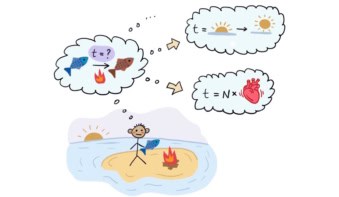
A quarter of a century after it was first posed, a fundamental question about the nature of quantum entanglement finally has an answer – and that answer is “no”. In a groundbreaking study, Julio I de Vicente from the Universidad Carlos III de Madrid, Spain showed that so-called maximally entangled mixed states for a fixed spectrum do not always exist, challenging long-standing assumptions in quantum information theory in a way that has broad implications for quantum technologies.
Since the turn of the millennium, the Institute for Quantum Optics and Quantum Information (IQOQI) in Vienna, Austria, has maintained a conspicuous list of open problems in the quantum world. Number 5 on this list asks: “Is it true that for arbitrary entanglement monotones one gets the same maximally entangled states among all density operators of two qubits with the same spectrum?” In simpler terms, this question is essentially asking whether a quantum system can maintain its maximally entangled state in a realistic scenario, where noise is present.
This question particularly suited de Vicente, who has long been fascinated by foundational issues in quantum theory and is drawn to solving well-defined mathematical problems. Previous research had suggested that such a maximally entangled mixed state might exist for systems of two qubits (quantum bits), thereby maximizing multiple entanglement measures. In a study published in Physical Review Letters, however, de Vicente concludes otherwise, demonstrating that for certain rank-2 mixed states, no state can universally maximize all entanglement measures across all states with the same spectrum.
“I had tried other approaches to this problem that turned out not to work,” de Vicente tells Physics World. “However, once I came up with this idea, it was very quick to see that this gave the solution. I can say that I felt very excited seeing that such a relatively simple argument could be used to answer this question.”
Importance of entanglement
Mathematics aside, what does this result mean for real-world applications and for physics? Well, entanglement is a unique quantum phenomenon with no classical counterpart, and it is essential for various quantum technologies. Since our present experimental reach is limited to a restricted set of quantum operations, entanglement is also a resource, and a maximally entangled state (meaning one that maximizes all measures of entanglement) is an especially valuable resource.
One example of a maximally entangled state is a Bell state, which is one of four possible states for a system of two qubits that are each in a superposition of 0 and 1. Bell states are pure states, meaning that they can, in principle, be known with complete precision. This doesn’t necessarily mean they have definite values for properties like energy and momentum, but it distinguishes them from a statistical mixture of different pure states.
Maximally entangled mixed states
The concept of maximally entangled mixed states (MEMS) is a departure from the traditional view of entanglement, which has been primarily associated with pure states. Conceptually, when we talk about a pure state, we imagine a scenario where a device consistently produces the same quantum state through a specific preparation process. However, practical scenarios often involve mixed states due to noise and other factors.
In effect, MEMS are a bridge between theoretical models and practical applications, offering robust entanglement even in less-than-ideal conditions. This makes them particularly valuable for technologies like quantum encryption and quantum computing, where maintaining entanglement is crucial for performance.
What next?
de Vicente’s result relies on an entanglement measure that is constructed ad hoc and has no clear operational meaning. A more relevant version of this result for applications, he says, would be to “identify specific quantum information protocols where the optimal state for a given level of noise is indeed different”.

Entanglement gets hot and messy
While de Vicente’s finding addresses an existing question, it also introduces several new ones, such as the conditions needed to simultaneously optimize various entanglement measures within a system. It also raises the possibility of investigating whether de Vicente’s theorems hold under other notions of “the same level of noise”, particularly if these arise in well-defined practical contexts.
The implications of this research extend beyond theoretical physics. By enabling better control and manipulation of quantum states, MEMS could revolutionize how we approach problems in quantum mechanics, from computing to material science. Now that we understand their limitations better, researchers are poised to explore their potential applications, including their role in developing quantum technologies that are robust, scalable, and practical.



